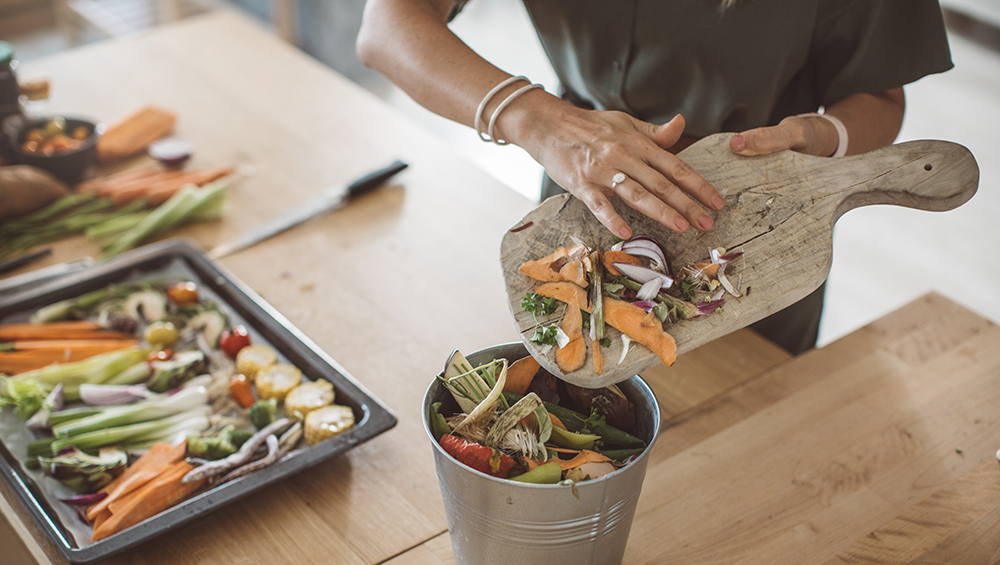Eliminating food waste may sound like an ambitious goal, but you can make real progress with these simple steps.
The facts about food waste are more than a little startling. Roughly one third of the food produced for human consumption in the U.S. gets lost or wasted. Some of that waste occurs during processing and distribution – long before it makes it into your local market – but considering the impact of that waste on the planet as well as our wallets, it’s easy to see we should all be doing a little more in our own homes to curb that trend.
While it can be overwhelming to think about all the changes involved in reducing your personal food waste, remember that a zero-waste kitchen is more of a philosophical approach to how you choose to feed yourself versus an exact science. And, like most habits you might want to change, it’s best practiced one step at a time. Here are some of tips to get you started.
Examine the Big Picture. Start by thinking about how you bring food into your house and store it. Do you regularly rotate ingredients and make a plan to use items that are soon to expire? If spoilage is a problem, make a point to learn how to store food correctly and get creative with leftovers. Over the course of a year, changing your habits and making little efforts here and there add up.
Rethink Your Recipes. Once you begin to apply a zero-waste mindset to your cooking, you’re likely to find all kinds of new ways to use ingredients. For example, instead of tossing your beet greens in the trash, try incorporating them into a soup or pasta dish. Similarly, broccoli stems can be grated into slaw, leftover vegetable trimmings can make a hearty broth, and the seeds that you scoop out of a winter squash can be toasted and transformed into a tasty snack … the possibilities are endless.
Make the Basics. Reducing kitchen waste boils down to a few simple strategies, including preparing only as much food as you truly need. So ask yourself this: Do you really need a half dozen bottles of salad dressing sitting in your fridge? Why not learn to make your own? With a few basic ingredients you can make many of your own dressings and condiments that are sure to taste fresh and flavorful. Plus, your own homemade creations are bound to be healthier because you’ll avoid unnecessary preservatives. Try to pare down the number of prepared foods you bring into the kitchen whenever possible.
Learn to Preserve. Few cooks manage to use every last scrap of food that comes their way, so think about how you can extend the life of certain ingredients before they go bad. For example, plenty of fruits and vegetables can be tucked away in the freezer to be used later in soups and smoothies. Cucumbers and carrots will last longer in a quick pickling brine. And food dehydrators are a handy way to make all kinds of dried produce that is usually far more expensive to buy at the grocery.
Start Something New. Romaine lettuce, scallions and celery are just some of the many vegetables you can watch regrow on your windowsill if you place the root end scraps in water that you refresh every few days. And there are even more foods that you can start the same way and then transplant into soil once new roots emerge, including beets, onion, garlic and many herbs. For those foods you can’t regrow, consider starting a compost bin. It’s the ultimate form of recycling, transforming food waste into what many gardeners refer to as “black gold.”
 Mindful Sodexo
Mindful Sodexo 

0 Comments